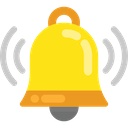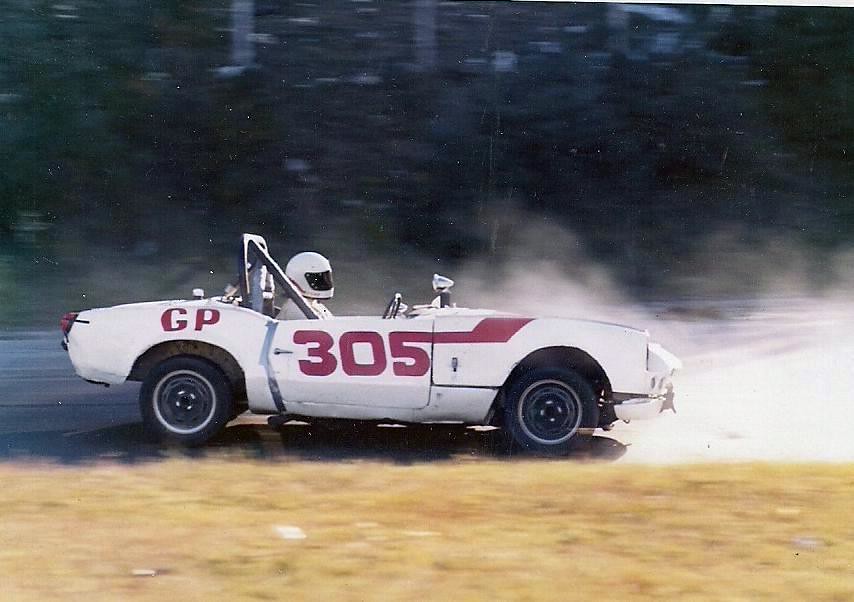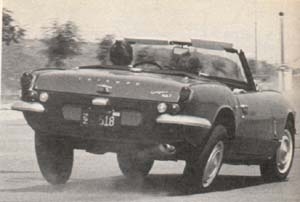Shocks are not the problem, save your money.
I raced a Spit (ultimately being very successful at it) for several years, and can speak fairly knowledgeably about what you are seeing. The Spit rear end is a simple swing axle design, which has a lot of inherent design flaws. (early Corvair anyone?). The simple and best fix is to increase the static rear negative camber (exactly what you have).
The early standard race setup was to increase the negative rear camber (so the wheels would angle inward and are closer together at the top than the bottom) to prevent rollover and rear wheel lift under hard cornering. (the wheel would literally tuck in under itself going over to major positive camber - the same thing you see when the car is on a lift). To prevent this going too far in under load, a camber compensator - a flat bar, was also then attached below the diff to the 2 uprights, limiting the amount of tuck under. All in all, a bad design and a compromise fix.
Later designs (like your 1500) used a significantly modified spring which achieved the same result, but was much more reliable (and cheaper for Triumph).
The static sitting position of this is exactly what you are seeing.
Under load, this negative camber does flatten out, and in cornering it all works to the put maximum flat tire contact patch on the road. My guess, like TT noted, is the arc of the spring was adjusted a bit more - perhaps for auto crossing or just spirited driving.
While tire wear on the inside may increase, it may be nothing more than normal wear, and trying to fix this will likely decrease the handling - so it's a big trade-off - the remedy may be worse than the disease. if it were mine, I'd live with it and thank the previous owner for fixing this design flaw. Buy some new tires, don't worry about the wear, and enjoy your sporty setup.
Here's a shot of my early car in a hard right turn - what it can look like if not dealt with properly...
Here's a small picture of what can happen if you don't live with the negative camber you have now and go too far the other way...
The only other adjustment to check is rear toe - this is adjusted with shims where the upright "radius" rod mounts to the body. But this rarely needs adjustment unless the car gets hit.
You may want to check out these links as well. A picture of a Herald (same car underneath as a Spit) also really showing the point I'm making.
https://herald-tips-tricks.wikidot.com/rear-suspension:jacking-and-tuck-under
https://www.fairpoint.net/~herald948/database/cc/
Good luck with it, and welcome aboard. The Spit is a great little car.
 Hi Guest!
Hi Guest!


 smilie in place of the real @
smilie in place of the real @
 Pretty Please - add it to our Events forum(s) and add to the calendar! >>
Pretty Please - add it to our Events forum(s) and add to the calendar! >> 

